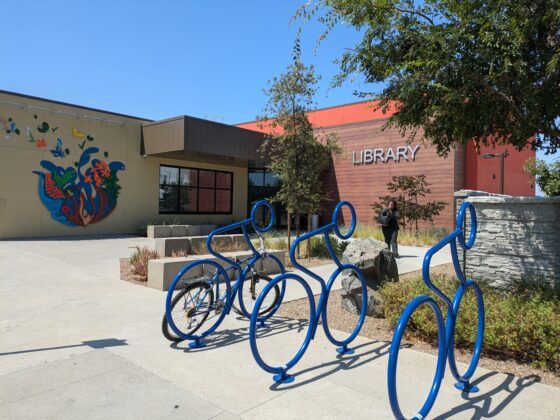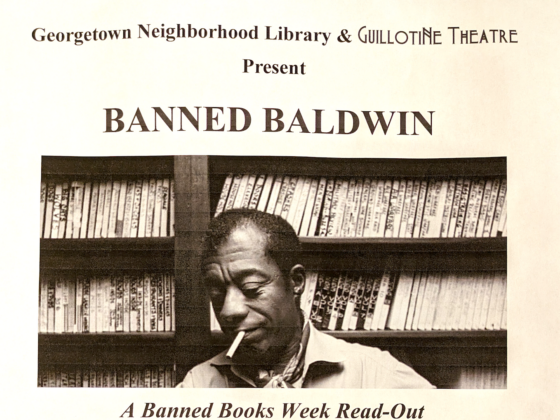What happens when a philanthropic institution transcends the transactional to become transformational?
How can an organization help serve as a bridge between a county’s urban center, and its rural communities?
And what happens when a community foundation purchases and renovates a former grocery store to create a hub for nonprofits – a one-stop-shop to connect residents to the resources they need?
Those are the questions I ask to frame the opening to a conversation I had with three folks from the Findlay-Hancock County Community Foundation: President and CEO Brian Treece; Chief Community Engagement Officer Kimberly Bash; and Communications Director Genna Freed.
I first learned about the Findlay-Hancock County Community Foundation when Our Towns co-founders Deb and Jim Fallows took a reporting trip to northwest Ohio last summer. Jim writes about that trip here, and Deb reports on the tiny town of Mt. Blanchard here.
You can watch my conversation with Brian, Genna, and Kimberly here:
Tucked in northwest Ohio, with Toledo to the north and Columbus to the south, Hancock County is home to nearly 75,000 residents. Little more than half live in the city of Findlay, the county seat.
I discuss with Brian, Genna, and Kimberly the communities the Foundation serves. They told me how their team takes seriously the “dash” in “Findlay-Hancock County,” working to serve as a bridge between the region’s urban core and its rural communities.
We talk about how the Community Foundation, based in Findlay, partnered with Community Heart & Soul to bring their signature “values-based strategic planning process,” as Brian explains it in our conversation, to towns throughout the county. It began with McComb and the nearby village of Hoytville in 2015, with Mt. Blanchard following in 2016. Then came Arlington in 2022, and, just recently, it was announced that Arcadia would become the fourth Heart & Soul town in Hancock County.
We’ve seen community foundations championing, supporting, and funding the Heart & Soul process elsewhere, like in Iowa with the Community Foundation of Greater Dubuque, which we featured here and here, and in South Carolina with the Arras Foundation, which we’ve reported on here and here and here. In Pennsylvania, we saw a similar approach with PA Humanities, which we’ve featured here and here. (Community Heart & Soul is a partner and supporter of Our Towns reporting.)
Brian, Genna, and Kimberly also discuss two vital community hubs – one physical, the other virtual – the Findlay-Hancock County Community Foundation has helped to create:
– The physical hub: The Foundation purchased and then renovated a former grocery store to create The Family Center. Housing a dozen nonprofits that lease space from the Foundation, the center creates a ‘one-stop-shop’ for residents seeking assistance.
In our conversation, Kimberly shares how one resident arrived seeking cancer patient services. But before they could receive cancer treatment, they needed to address several other hurdles in the way.
Make another appointment on another day, and another one after that, and then have to head back and forth across town? Not here. Just walk a few doors down to the left. Or as Genna put it: “No bus or cab needed – everything under one roof.”
– The virtual hub: Hancock Helps is a web-based platform that has grown out of a grant first issued to support mental health. Today, it still connects residents with resources for mental health services but also housing assistance, warming centers, and more. It is part of a ‘No Wrong Door’ philosophy – that once a resident ‘arrives,’ they’ll eventually be connected to the specific help they need.
We talk about building and maintaining trust with the residents the Foundation serves and the donors whose dollars they steward. When I asked about conversations with their community about taking risks, like purchasing a former grocery store, rather than risk, Brian focuses on the word ‘hope’, he told me.
“When you think about the role that foundations have, we have the opportunity to sometimes experiment,” (that is, take action when they think but don’t know for sure whether something will work), he told me. “Let’s try it. And then if it works, we provide a couple of years of funding. We see that idea of risk and hope in our work quite a bit.”
That data, which the Foundation routinely collects and analyzes, can become the proof to donors to sustain programs.
Whether you call it risk, or call it hope, or call it both, the Findlay-Hancock County Community Foundation is working to transform the region it serves in a number of ways. Check out our conversation (embedded above) to learn how.



